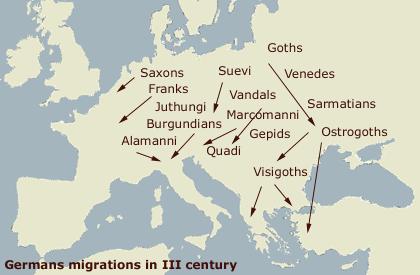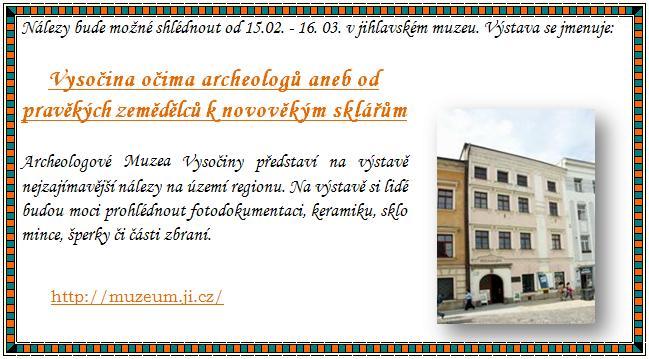Ó jé, autor, který neumí ani správně opsat (z neuvedeného zdroje) názvy kmenů, nehledě na faktické chyby, by se měl pro příště vyvarovat psaní dalších článků. Jako přehled o kmenech je tento příspěvek zcela bezcenný. Nejvíc mě pobavili Semnoni v Brambořích  , proč už rovnou nenapsat "v bramborách", vyšlo by to totiž nastejno...
, proč už rovnou nenapsat "v bramborách", vyšlo by to totiž nastejno...
Germanic tribes on our territory
Categories: Years of war and revolution
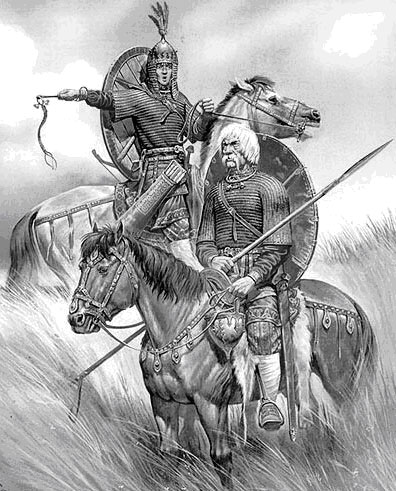 The Germanic tribes were one of the Indo-European groups of tribes that settled in northern, western and central Europe. They mostly used the names of their tribes and rarely used the collective name Germanic. Some linguists believe that the name is even of Celtic origin. The first mention of Germanic tribes in our territory is found in Roman literature- CeltsThese Boii conquered the Germanic Kimbrae, somewhere in the northern neighbourhood of Boiohemia (c. 113 BC). AD).
The Germanic tribes were one of the Indo-European groups of tribes that settled in northern, western and central Europe. They mostly used the names of their tribes and rarely used the collective name Germanic. Some linguists believe that the name is even of Celtic origin. The first mention of Germanic tribes in our territory is found in Roman literature- CeltsThese Boii conquered the Germanic Kimbrae, somewhere in the northern neighbourhood of Boiohemia (c. 113 BC). AD).
The Germanic conquest of Celtic territory was quite long. But all was without bloodshed and violence in the form of riots. In fact, mutual coexistence benefited both sides. By the time the Teutons were making their way into Celtic territory, the Celts were at the height of their glory and could therefore have easily stopped the Teutons. They were also an inferior cultural group, and so adopted many customs and linguistic expressions from the Celts. The Germans outnumbered the Celts in numbers, not in strength.
Among the Germanic tribes that penetrated into the territory of our state are the Marcomanni. They moved from Pomerania to Bohemia at the end of the Old World War and remained here until the end of the 4th century AD. Some historians claim that they never actually left, but were taken over by other settlers. The Marcomanni belonged to the Svéb, a group of Eastern European Germanic peoples. Together, they fought in what is now France against the Romans. In 58 BC, under Arivistus, they attacked Caesar's lines, but were defeated and forced to retreat to the east, which is why they came to our territory.
Archaeologists have argued since time immemorial whether the weapons and pots found on our territory belong to the "Old Bohemians" or the "Old Germans". Unverifiable evidence has, of course, been used to make strong words on both sides, but nowadays, when archaeology has more sophisticated methods and techniques, such unverifiable
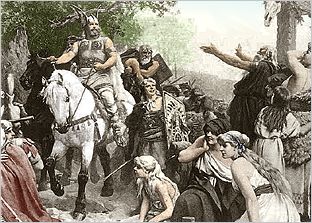
evidence is becoming increasingly scarce. Germans didn't drive out the entire Celtic population, the more settled part that lived in remote areas remained. There was a gradual mixing of tribes even with the arrival of the Slavs. In addition to the Marcomanni, the Lygians inhabited Upper Silesia, the Silingi (Vandal branch) beyond the Giant Mountains, the Burgundians on the Oder and Varta, the Goths on the lower Vistula, Semnons in Lusatia and Brambori, Hermunduri in Saxony, followed by the Langobards, then the Narisks beyond the Bohemian Forest.
Another Germanic tribe that penetrated our territory were the Quadi. Like the Marcomanni, they had to flee from the Roman forces to the east. They settled in what is now southern Moravia, south-western Slovakia and Upper Austria. In Moravia, the Quadi ethnically "mixed" with the Kotik tribe that still lived there.
FIND
Prague- Lysolaje - The discovery of the grave of a warrior with a horse, which was found in 1906 during the construction of a new road in the garden of house no. 23 (in Čábelecka Street). In the grave, the skeleton of a man, the bones of a horse and a ceramic vessel were found.
Hulín- Two Germanic settlements were found in the local cadastre. At Izidorek and in Vysoké trní. Subsequent research brought rich findings and knowledge to the Kromeriz museum. It was mainly coarse barbarian pottery that was found here. Fragments of finer
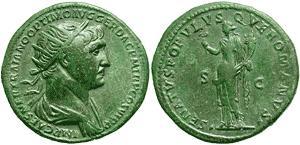
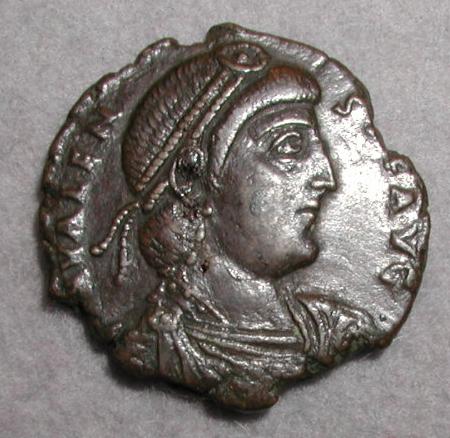
Mohelno in the Trebic region- during the construction of a water reservoir in the locality called Kočičák near the Sřipský brook, after the topsoil was covered with about six hectares of soil, finds from different periods were discovered in one place. In addition to the older and younger Stone Age, there were also sites from the Roman period. Everything is now being examined by experts in the Jihlava Museum. They are trying to reassemble the 4,000 ceramic fragments into vessels. These are ceramics produced during the reign of the Roman emperor Valens, members of the Marcomanni and Quadi tribes. These are pots and coins of varying quality. A coin depicting the Emperor Valens has also been found.
And finally, something for the beer drinkers: The predecessor of today's beer - a fermented drink made from sprouted grain - was known to people in the early Stone Age. Despite all efforts, it has not been possible to discover how beer came into being; it is generally assumed that it was not an invention, but a coincidence. Beer was brewed in our territory by the Celtic Boii, the Germanic Marcomanni and Quadi, and later by the Slavs. The basic principle of brewing beer has remained the same for centuries.
 However, the technical process of production has undergone major changes. Originally, beer was brewed by women. They proceeded in a very primitive way and based only on empirical knowledge. They knew nothing about the effect of malt enzymes on the wort or about yeasts and their enzymes, which turn wort into beer during fermentation. Women also made soups or sauces from beer, which were served as a particularly rich 'liquid bread' in poor families until the mid-19th century.
However, the technical process of production has undergone major changes. Originally, beer was brewed by women. They proceeded in a very primitive way and based only on empirical knowledge. They knew nothing about the effect of malt enzymes on the wort or about yeasts and their enzymes, which turn wort into beer during fermentation. Women also made soups or sauces from beer, which were served as a particularly rich 'liquid bread' in poor families until the mid-19th century.
You can search for artefacts from this period using our metal detectors.
The article is included in categories:
Post
Tak kmenů je tolik, že vypsat všechny by nestačilo na jeden článek a názvy uvádí oficiální zdroj. Nejsem tak chytrá, jak ty, abych znala každý kmen a místo, kde se nacházel, takže musím hledat. A představ si, že si tento článek četlo dost studentů historie a dokonce jsme ty kmeny dávaly dohromady. Takže klidně napiš článek, já budu ráda, aspoň mně ukážeš, jak se píše článek, když já je psát neumím
Brambořice, tam byly uvedeny, protože tak se říká Braniborsku, nevím proč, asi nějaké hanlivé označení. A jo mám tam překlep, místo kotíků mají být kotinové,jinak bych ráda věděla, co jsou to faktické chyby!
POZOR: genitiv singuláru od substantiva Valens nezní //Valense//, nýbrž //Valenta//
Kde vych mohl ziskat informace nebo jedtly nekdo nevi ktere kmeny byly v prvnim stoleti na severni morave ve slezku ?
